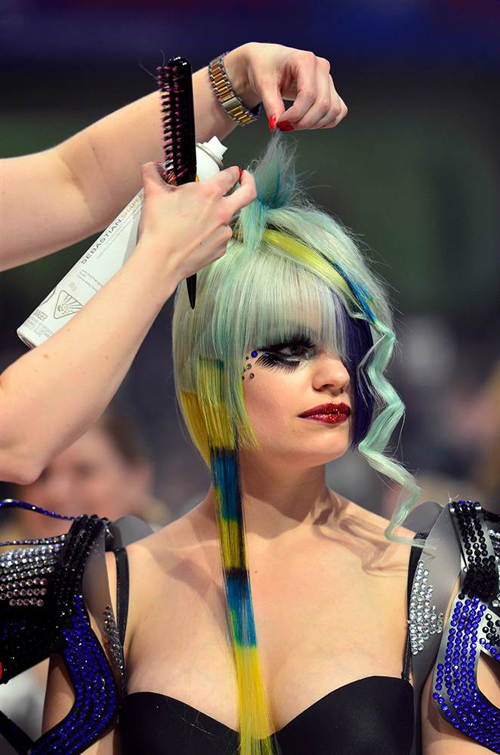
As a child, Francesca Herlihey used to tell her big sisters that she was going to be a model and a scientist when she grew up.
In typical sibling fashion, “they always made fun of me for it,” Herlihey says with a smile.
Once she started high school, she all but forgot about her modelling aspirations; science became her focus.
“I’ve always loved it. It’s like solving a puzzle, a never-ending puzzle.”
Herlihey enrolled in U of G’s undergraduate pharmaceutical chemistry program, later switched to biochemistry, and is now a doctoral candidate working with molecular and cellular biology professor Anthony Clarke, who is also assistant vice-president for graduate studies.
A chance meeting in a Guelph hair salon three years ago resulted in Herlihey dusting off her modelling dreams. She went into ACQUA Salon for a trim and came out with an offer for an all-expenses-paid trip to Milan, Italy, for a hair and fashion show.
“They said, ‘all you have to do is let us do what we want to do to your head.’”
That 2012 trip to the OMC Hairworld World Cup in Milan led to additional gigs with ACQUA Salon in Toronto. Earlier this month in Frankfurt, Germany, Herlihey once again modelled for Team ACQUA in the OMC Hairworld World Cup.
“It’s sort of the Olympics of hair shows,” she says. More than 1,000 participants from 50 countries took part. The ACQUA Salon team placed in the top six.
Being a hair model requires more than just letting people do what they want to your hair, she says.
“It’s actually very stressful.” There are countless practice sessions for hair, makeup and clothing. Shows involve timed hair-cutting sessions as well as standing and posing for hours.
“That’s not so fun when you are wearing eight-inch heels,” Herlihey says. “You have to stand perfectly still; you cannot move your head at all. So you have to entice the judges just with your face, trying to catch their eye to get them to look at you.”
Back in Guelph, Herlihey is now sporting a pink-streaked Mohawk. Shaving off most of her hair was the only way to even out the colourful, geometric haircut she received at the show.
When she was growing up, her parents asked her to keep her haircuts conservative. “I think I was in Grade 11 before my mother let the hairdresser even put a pink stripe in my hair. One of the first things I did at university was get a faux-hawk, shaving half of my head.”
Back in the lab, she’s studying how bacterial pathogens cut holes in their own walls so they can stick out appendages to swim around and infect other cells. She is working with Salmonella, characterizing an enzyme that cuts holes in rigid cell wall material called peptidoglycan.
“By targeting the enzyme that is making these holes, we can hopefully find a way to stop it,” she says. Understanding the enzyme’s mechanism could eventually lead to the development of anti-microbial therapeutic agents against it.
Beyond her PhD, she’s thinking about law school. “I’d like to be a patent attorney, working in the biochemical sector.” Or maybe she will go into cosmetology — “the science behind cosmetology, that is. I’m more interested in the research.”
She plans to spend the next two years preparing for the next international competition, possibly the 2016 OMC Hairworld World Cup in Korea. Her “training” regimen involves using numerous products to help her hair grow fast and healthy.
The older sister who used to tease Herlihey about her childhood dreams now loves repeating the story. “She is always telling people, ‘my sister always wanted to be a model and a scientist, and she’s doing it.’”